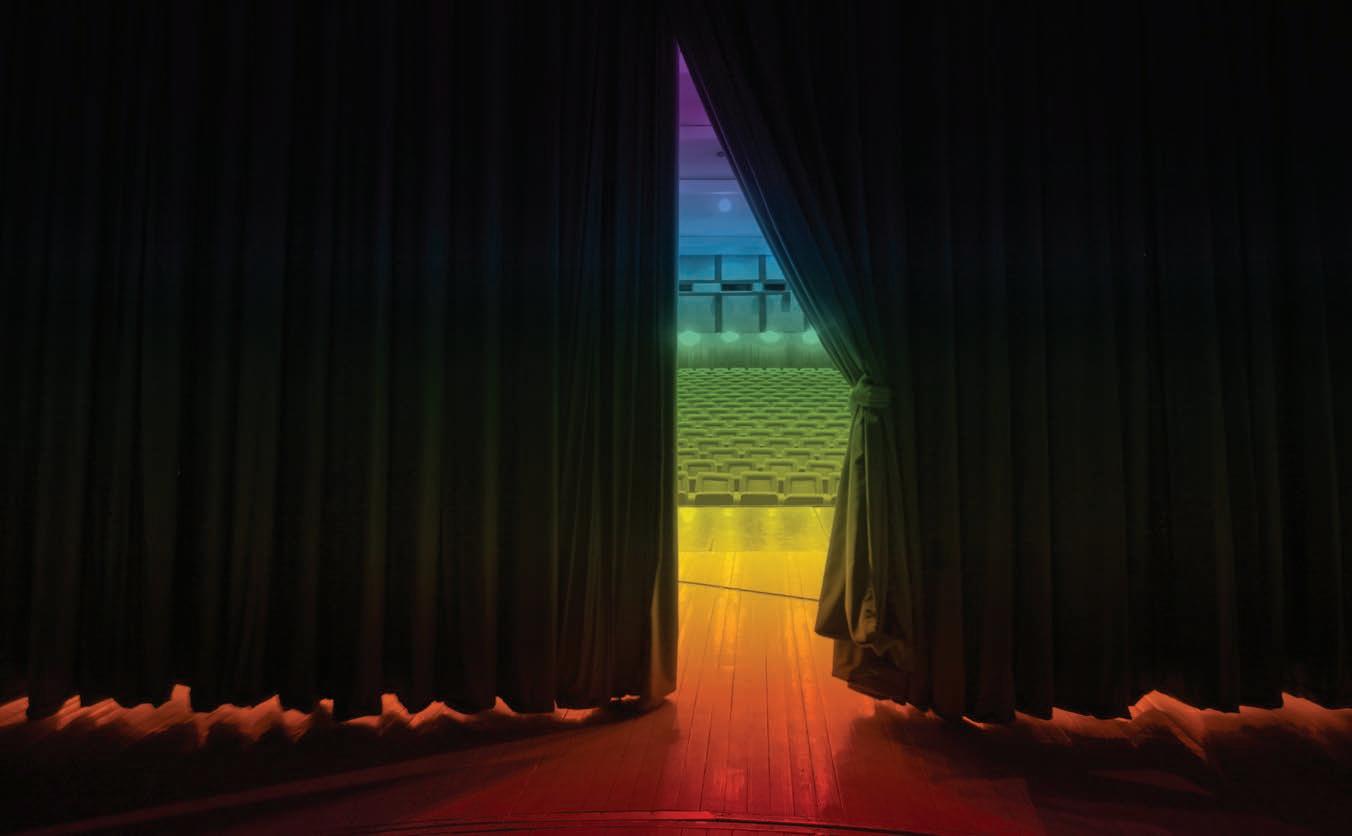
5 minute read
Tosa Man and UWM Prof Brew Ancient Beers!
BY MICHAEL MUCKIAN
Downstairs in his Wauwatosa basement, homebrewer Jeff Enders is making history.
Perhaps it’s better to say that Enders is remaking history. The Milwaukee native has reached deep into the annals of brewing to forage recipes from ancient civilizations developed long before hops was king to create historic styles that don’t always seem like beer, and yet provide the critical building blocks on which the current brewing industry—and civilization, for that matter—stands.
Beer is one of the oldest beverages that humankind has produced, with historic evidence confirming a barley-based fermented beverage dating back to the 5th century B.C. Persia. As many brewers know, certain cereals and grains contain the right amount of natural sugars and, with the introduction of wild yeast, can begin their own fermentation process. The collective result was a spontaneous development of beer-like drinks among cultures around the world. Hops, a key ingredient in modern brews, first emerged around the 8th century A.D. when Bavarian Benedictine monks introduced the plant’s cones as a preservative and flavoring ingredient in the brewing process. But by then beer in some form already had existed for more than 1,000 years.
Enders’ brewing experience doesn’t reach back that far nor run that deep. Enamored since finding a home brewing text in 1971, he didn’t brew his first batch until he acquired a cache of castoff equipment from a friend in 1995. Since then, he’s brewed a sea of beer and earned a dozen homebrewing awards, mostly from the Wisconsin State Fair, including Best of Class and Best of Show honors. He’s been active in the local homebrew scene, is a frequent beer judge, and has served as president of the Beer Barons, one of Milwaukee’s homebrew clubs.



His turn toward ancient and/or stylized beers happened in 2002, inspired in part by what he read in Stephen Harrod Buhner’s Sacred and Herbal Healing Beers: The Secrets of Ancient Fermentation. It’s a discipline few home brewers pursue on anything but an anecdotal basis.

“There was a mystique about unhopped beers in the history books,” Enders says. “Other cultures brewed with whatever they had available. Some brewers used hops, some herbs, some both.”
Enders’ first attempt at ancient brewing involved a spruce beer, with sprigs plucked directly from his backyard tree. The success of his first batch led to several more over the years. “You should only use the fresh spruce tips, called ‘candles’, which appear in spring,” Enders says. “I only brewed it once a year in May when the candles emerged.”

The success of that project led to pumpkin beers, Craisin beers, brewing with cocoa nibs and other unusual ingredients. Historically speaking, the homebrewer was on a roll. Bettina Arnold, Professor of Archeology at UW-Milwaukee and self-described “European prehistorian” specializing in the Iron Age, found her way to home brewing via a different, yet complementary route to Enders’ path. A native of Würzburg in Germany’s Bavaria region, Arnold grew up in both Germany and the U.S. when her father taught at Wesleyan University in Connecticut. She moved here at age 3, then went back and forth between the two countries during her school years. She earned a B.A. in archeology at Yale University, and an M.A. and Ph.D. in anthropology from Harvard. Arnold spent her student summers back in Europe, digging into sites and studying the Celtic Iron Age.

“This was always my area of interest, especially the social organizations and burial arrangements,” she says. “The various tombs yielded supplies the deceased would need in the afterlife, including elaborate drinking cups and vessels. Alcohol was used not only as a social lubricant, but also manipulated by the elite to maintain the power structure. This is something all societies do to a greater or lesser extent.”
For Arnold, actual homebrewing started when she met her husband on a Bavarian dig site and the two discovered they both liked dark wheat beer, a variety that was difficult to find. Returning to the U.S., they started brewing it together.
Enders audited one of Arnold’s UWM classes, Anthro 212, “The Past on Tap: The Archeology of Fermented Beverages,” in 2019. Just prior to the start of the semester, however, he entered “The Unhopped Iron Brewer Challenge,” a contest sponsored in conjunction with the class that involved brewing farmhouse ales using ancient ingredients and no hops. Enders brewed a cervoise, a Gallo-Roman saison dating back to 63 A.D. He brewed the beer using barley and other cereals, and bittered and scented it with aromatic herbs, including bog myrtle, wild rosemary, yarrow, rosehips, coriander, sweet woodruff, and locally grown lavender most likely from his own backyard.
Enders was one of seven contestants brewing six different types of beer. He won the competition. “If you’re brewing with ingredients you’ve never used before, you don’t really know what the results should be,” he says of challenges in the process. “But making ancient beers didn’t change the way I brew.”
Enders and Arnold continue to talk beer, in class and out, and have brewed together several times. He also spent one day per week this past summer serving as one of the volunteer “brewers” at Old World Wisconsin, the historical park in Eagle. That process introduced him to brewing over an open flame and doing everything by hand, with temperature control virtually nonexistent. It was easier than he expected.
“Brewing is something you can make as complicated or as easy as you want,” he explains. “As long as your methods are sound, it doesn’t matter how old or how new your technique is. In the end, it’s still beer.”
Michael Muckian was the banking and finance writer for the Milwaukee Business Journal and is the author of The Complete Idiot’s Guide to Financing and Accounting and The One-Day MBA in Finance and Accounting.











